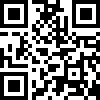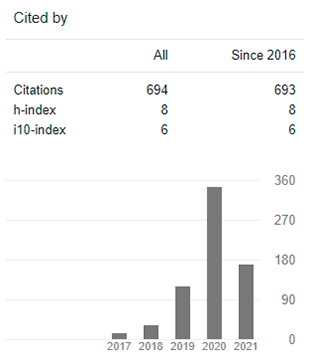Proper Use of Social Media and the Internet to Safeguard Students' Digital Security
DOI:
https://doi.org/10.29394/Scientific.issn.2542-2987.2022.7.25.16.303-313Keywords:
social media, digital education, digital securityAbstract
Guiding adolescents in the proper use of social media and the internet is a necessity, as their inappropriate use can lead to behavioral disruptions and expose individuals to a range of dangers. However, the benefits they offer should not be underestimated. Moreno, González, Torres, and Hernández (2017) emphasize the opportunities these platforms provide in the educational realm and the development of communication skills, entertainment, and integration in the contemporary world. On the other hand, Astorga-Aguilar and Schmidt-Fonseca (2019) highlight the risks minors face when using social media, underscoring the importance of digital education for adolescents and their families to reduce vulnerability due to a lack of knowledge about security measures. The objective of this essay is to develop a protocol that incorporates strategies to mitigate the risks associated with the use of social media and the Internet, aiming to preserve the digital security of students in a local institution. The specific objectives have been achieved through activities such as theoretical grounding and creating content on digital privacy using technological tools for widespread and easy access within the educational community.
Downloads
References
Arab, L., & Díaz, G. (2015). Impacto de las redes sociales e internet en la adolescencia: aspectos positivos y negativos. Revista Médica Clínica Las Condes, 26(1), 7-13, e-ISSN: 2531-0186. Recuperado de: https://doi.org/10.1016/j.rmclc.2014.12.001
Astorga-Aguilar, C., & Schmidt-Fonseca, I. (2019). Peligros de las redes sociales: Cómo educar a nuestros hijos e hijas en ciberseguridad. Revista Electrónica Educare, 23(3), 1-24, e-ISSN: 1409-4258. Recuperado de: https://doi.org/10.15359/ree.23-3.17
Chávez, F. (2021). Perfil Criminológico. Ciberdelitos: Una primera aproximación y proyección institucional. Revista Científica de Ciencias Jurídicas, Criminología y Seguridad, 30, 54-62, e-ISSN: 2661-6920. Quito, Ecuador: Fiscalía General del Estado - FGE.
Giménez, A., Luengo, J., & Bartrina, M. (2017). ¿Qué hacen los menores en internet? Usos de las TIC, estrategias de supervisión parental y exposición a riesgos. Electronic Journal of Research in Educational Psychology, 15(43), 533-552, e-ISSN: 1696-2095. Recuperado de: https://doi.org/10.25115/ejrep.43.16123
INEC (2019). Tecnologías de la Información y Comunicación. Encuesta Multipropósito - TIC 2019. Ecuador: Instituto Nacional de Estadística y Censos.
Moreno, N., González, A., Torres, A., & Hernández, J. (2017). Alfabetización digital a padres de familia en el uso de las redes sociales. Alteridad, 12(1), 8-19, e-ISSN: 1390-8642. Recuperado de: https://doi.org/10.17163/alt.v12n1.2017.01
Verdejo, M. (coord.). (2015a,b). Ciberacoso y violencia de género en redes sociales: Análisis y herramientas de prevención. ISBN: 978-84-7993-281-7. España: Servicio de Publicaciones de la Universidad Internacional de Andalucía.
Downloads
Published
How to Cite
Issue
Section
License
Copyright (c) 2022 INDTEC, C.A.

This work is licensed under a Creative Commons Attribution-NonCommercial-ShareAlike 4.0 International License.
The content of the journals of this site, are under a Creative Commons Attribution-Noncommercial-Share Alike 4.0 International License.













